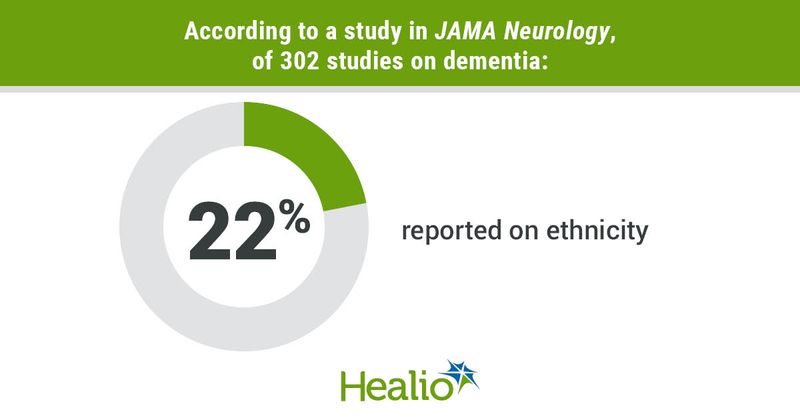Dementia research needs to improve inclusiveness
Investigators should increase racial and geographic diversity and in-depth biomarker studies in dementia research to be more representative of routine practice to improve diagnosis and development of treatment for dementia.
“Much of contemporary dementia research covers only a small part of the broad spectrum of patients with dementia,” co-author Frank J. Wolters, MD, PhD, department of epidemiology, Erasmus University Medical Center, Rotterdam, the Netherlands, told Healio Neurology. “In particular, the elderly patients and non-White patients from low- and middle-income countries are underrepresented.

“We need more inclusive studies to capture the pathophysiology, diagnosis and disease course in routine clinical practice using, for example [position emission tomography (PET)]-imaging or easily obtainable blood biomarkers in diverse populations,” Wolters added.
Using Pub Med, Wolters and colleagues conducted a systematic review of dementia studies from the top 100 journals in neurology and neuroscience, geriatrics, psychiatry and general medicine published between Sept. 1, 2018, and Aug. 31, 2019. They identified 513 studies but excluded 211 because their dementia patient populations were fewer than 50 individuals.
In the remaining 302 studies, the median number of patients per study was 214, and mean age of diagnosis was 74.1 years. However, Wolters and colleagues reported the age at diagnosis was different between the study settings. The mean age of patients in the 180 clinic-based studies was 71.8 years at time of diagnosis vs. 80.6 years for patients in the 79 population-based studies.
Most clinic-based studies included the use of MRI, positron emission tomography imaging, and cerebrospinal fluid imaging, according to Wolters and colleagues. Further, these were performed in relatively young patients.
Investigators observed longitudinal designs were more common in population-based studies compared with clinic-based studies (82% vs. 40%). They also noted most studies emerged from North America and Europe. Most patients in these studies were white. Moreover, only 22% of studies reviewed reported on ethnicity, according to the researchers.
“The projected increases in dementia prevalence are largely owing to shifts in demography and an increasing prevalence of dementia risk factors,” Wolters and colleagues wrote in JAMA Neurology. “In many instances, however, it remains unknown if risk factors are associated with similar increases in risk across populations with various genetic makeup. Whether the genetic predisposition for dementia differs by race also remains unclear.”
According to researchers, standardized guidelines for reporting studies should be implemented and include race and ethnicity of participants to promote inclusiveness in future studies.
In a related editorial, Cerise L. Elliott, PhD, from the clinical interventions and diagnostics branch, division of neuroscience, National Institute on Aging/NIH, and colleagues said researchers need to focus on assessing the later stages of dementia. In addition, they said it is important to look at the specific genetic risk factors demonstrating disease earlier in life for those with dementia to better understand presymptomatic disease.
Elliot and colleagues noted the lack of diversity in dementia research may lead to underrepresentation of patients impacted most by dementia.
“There continues to be a lack of racial, ethnic and geographic diversity in dementia research,” Elliot and colleagues wrote. “Researchers, funders and publishers share responsibility for ensuring inclusiveness that reflects the burden of disease.”

